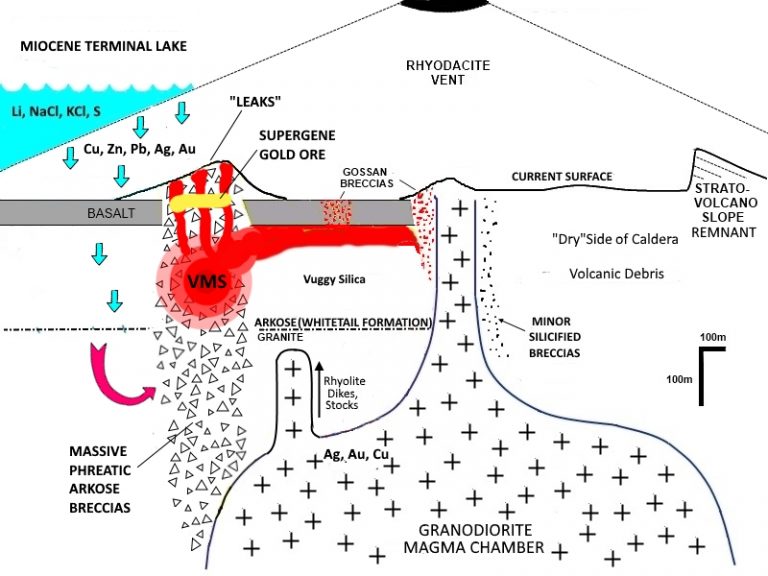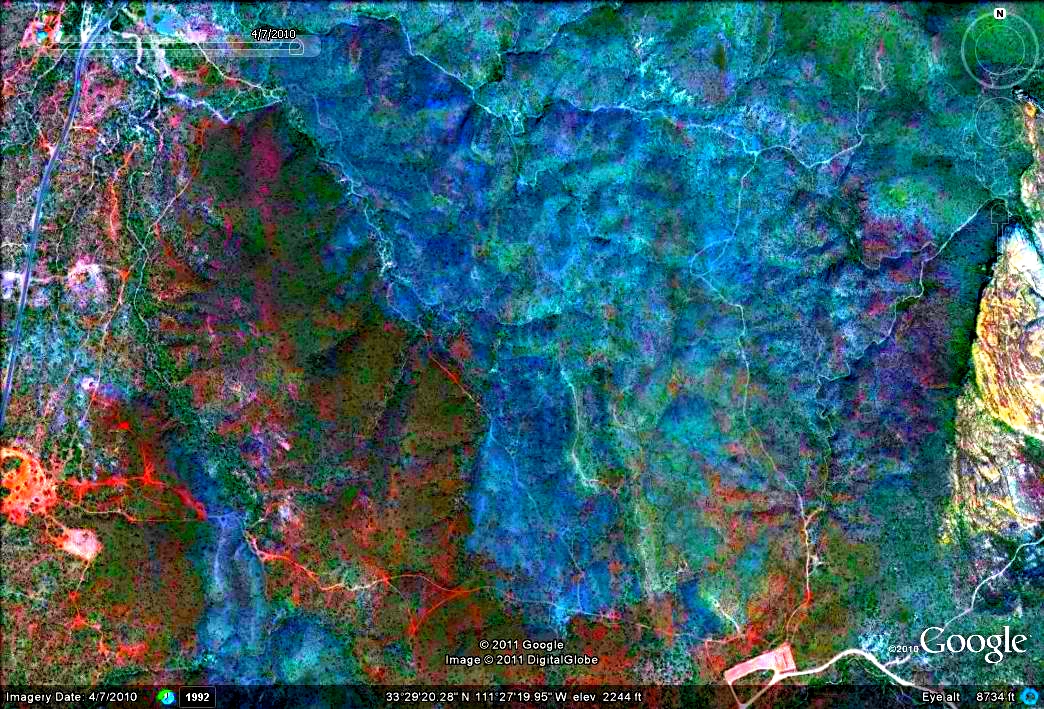The greatest pitfall I’ve fallen into during my search is ignoring the potential size and scope of the mining district, the infrastructure, the players, etc.
Just last weekend, I was investigating Cerro Negra (for the hundredth time), and while looking at the abundant disseminated copper staining and the extensive hematite breccia outcrops, and realized that this just doesn’t fit the VMS deposit model. A deposit type that I dismissed because of its normally huge size is the IOCG deposit, or Iron Oxide Copper Gold deposit that forms similarly, but the corrosive brine dissolves much more than just seawater. These deposits can be the largest of all and the Olympic Dam deposit in Australia is one of them. They have great vertical extent. In the model below that I made for the Molly Marie Prospect, all is pretty much right except one thing………. this is the model for an IOCG deposit, not a VMS. A submarine caldera, massive breccias, brine, and iron rich rock are all components of an IOCG deposit.

The deposit forms in these steps:
1) A large intrusive is emplaced at a shallow level in the crust (the magma chamber)
2) The intrusive heats the rock above
3) The cold brine cools the rock quickly and it shatters and causes miniature steam explosions and cracks throughout. The massive breccia is created.
4) In this case, the brine dissolves iron (the most soluble metal) from the thousands of feet of volcanic debris and the fractured basalt and flows into the breccia below depositing hematite and magnetite. This creates a chemical “trap”.
5) The brine dissolves the less soluble metals (copper and gold) from the volcanic debris and they come in from the sides of the heat source, upwell, and the gold, copper and other metals precipitate when they contact the iron oxides.
6) The system cools, and over time almost all metals above the water table are leached by the residual salt and are deposited at the water table creating supergene copper and gold.
This is the model for the Olympic Dam deposit:

The IOCG deposits vary widely in ore type because they are dependent on the donor rock and what metals it carries. Goldfield is proof that the donor Superstition volcanics have a high background level of copper and gold.
If there is an IOCG at the Molly Marie Prospect, than it should be seen in a magnetic survey, which is the number one indicator of an IOCG. A magnetic map of Arizona is below. It is on a large scale, but just to the right of the tip of the arrow a faint pink area can be seen where by my measurements the Molly Marie Prospect is located.

I dug through some work that I’d done in the past and came up with a photo of the Molly Marie caldera with the iron rich areas enhanced. What is strange is the hematite at Cerro Negra did not “light up”. It’s no wonder why every rock that I’ve crushed and panned in the brecciated area is full of magnetite, and there are random pieces of chrysocolla scattered over the area. In the below photo, the iron-stained breccias can be plainly seen.

As an experiment, to see how the brecciated area and Cerro Negra align with the Burbridge map, it was traced electronically onto the same photo. The mine workings were anchored to the “Great Mine” and the furthest extent of the iron staining to the west. This is not precise, but it is accurate for the purpose. It seems they were tunneling in the supergene zone of a very large orebody, not looking for or mining smaller ones.

Cuzzinjack
